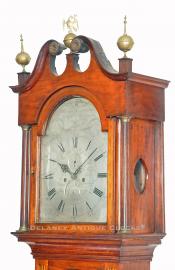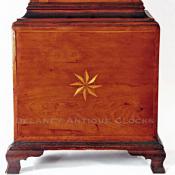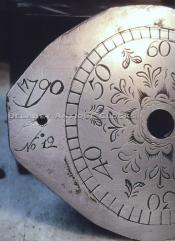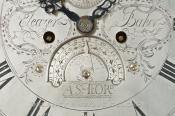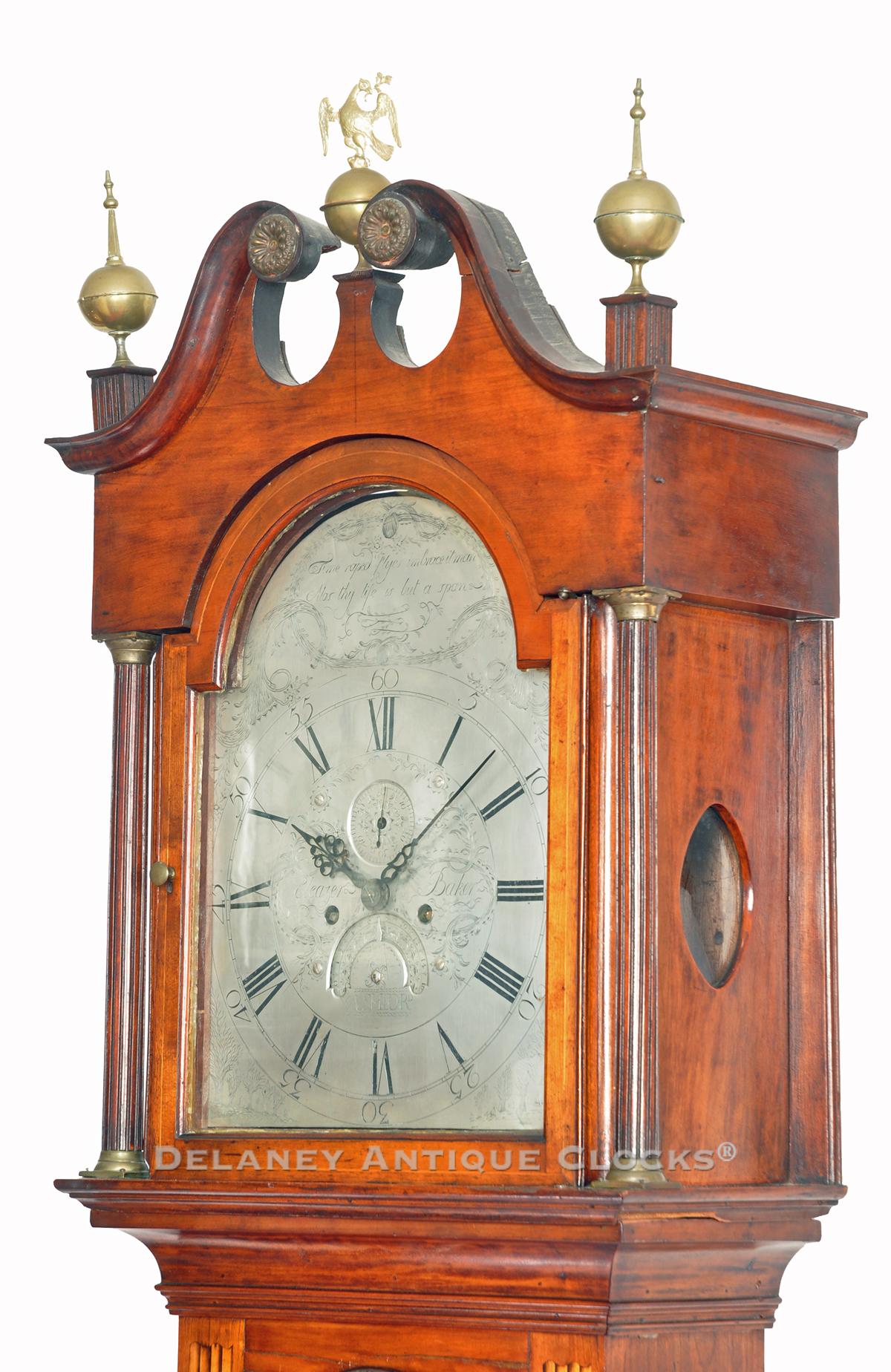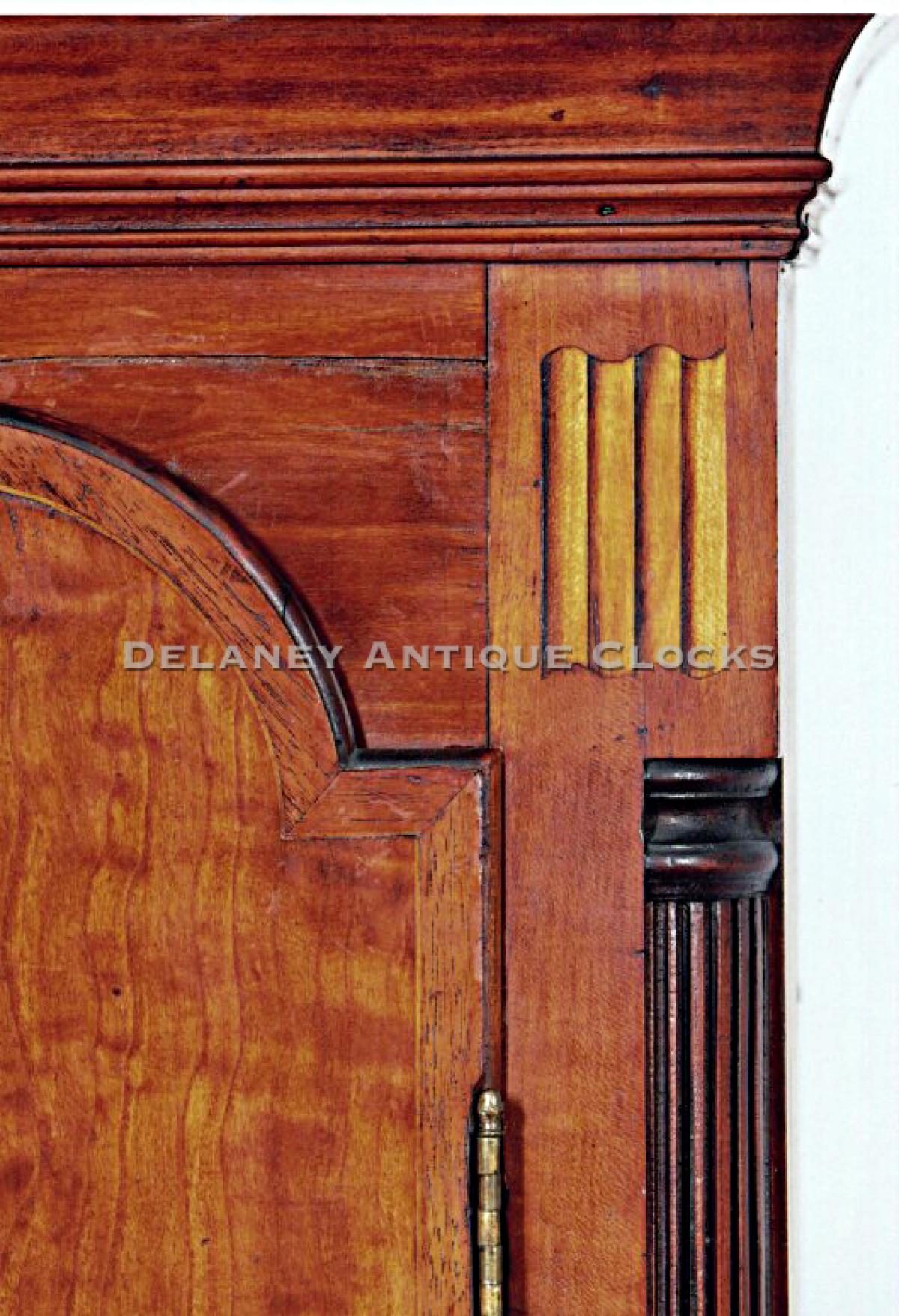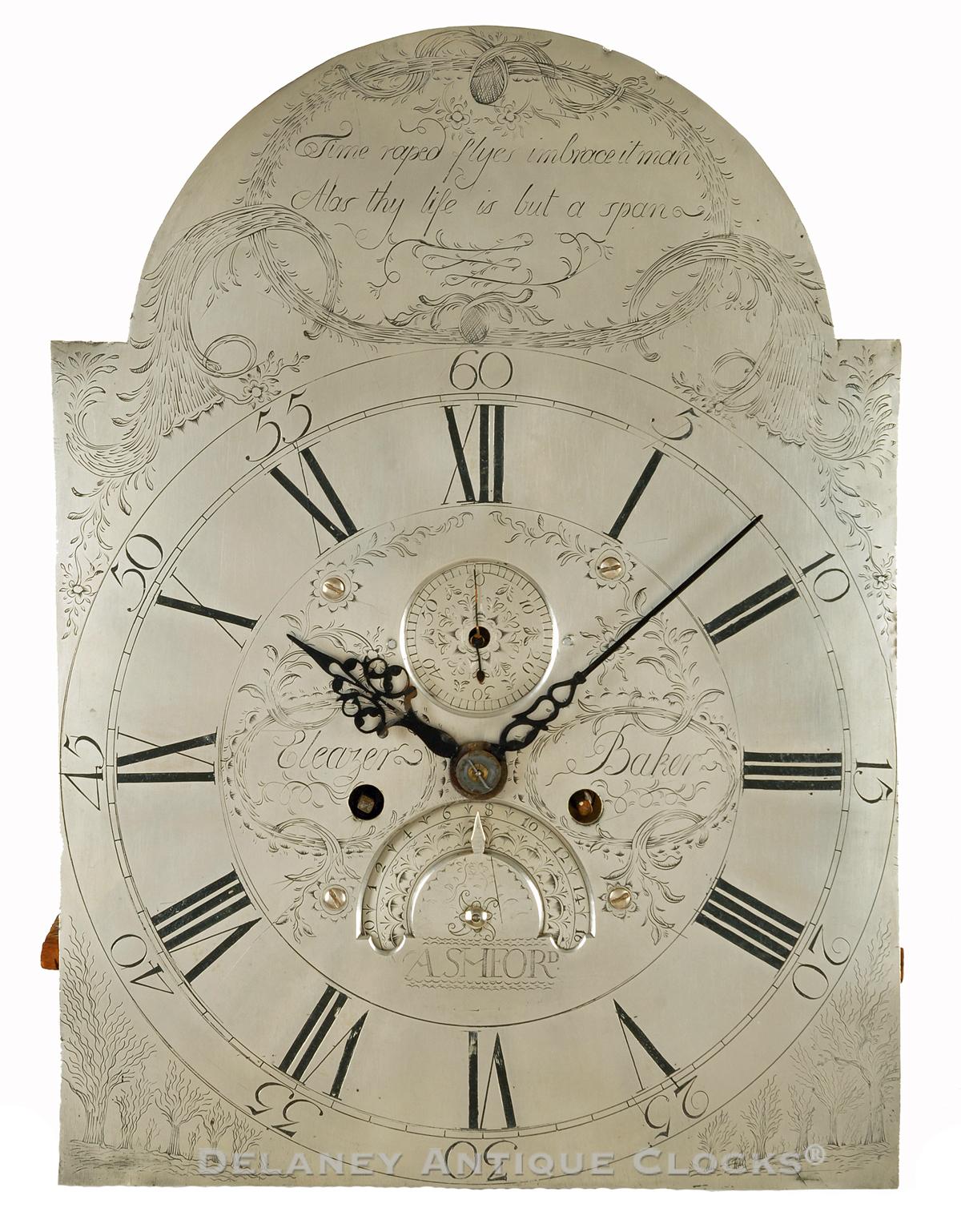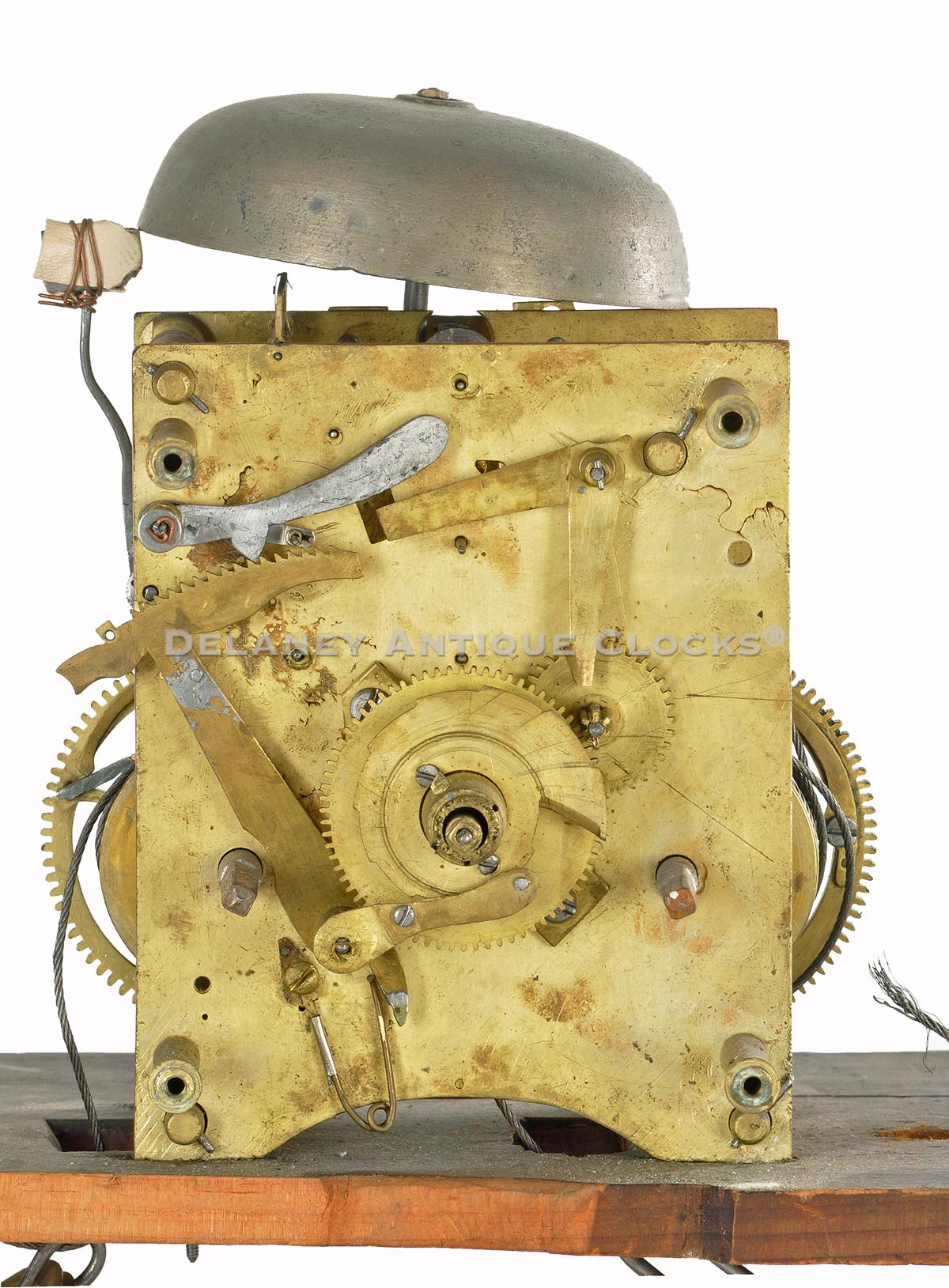Eleazer Baker of Ashford, Connecticut. An Inlaid cherry case tall clock that is dated "1790" and numbered "12." UU-107.
This is a very important clock. It is signed on the dial by the Clockmaker. In addition, it is also dated "1790" and numbered "12." The date and number were discovered in the process of cleaning the dial. This information was engraved on the outer edges of the seconds dial. It is not visible unless you remove this dial from the main dial plate.
The case is constructed in cherry and features a number of light wood inlays that include maple and mahogany. It is elevated on four shapely ogee bracket feet that are applied to the base molding. The base is framed in a thin mahogany banding. An eight-pointed star is centered in the cherry panel. The waist section is long. A tombstone-shaped waist door is trimmed with a molded edge. The perimeter is framed with a mahogany banding. The wood selected for this door is wonderfully figured. An inlaid paterae is centered in this door. Fluted quarter columns flank the sides of the waist and terminate in turned wooden quarter capitals. Inlaid above the quarter columns are additional decorative inlays. These feature a shading treatment. As a result, they appear three-dimensional. A nicely shaped molding follows the contour of the swan's neck pediment. These terminate in applied brass rosettes. The brass finials are mounted at the top of the hood. The two ball and spike finials are mounted on fluted plinths. The center finial features a phoenix and is centered between the horns. Two fully turned and fluted bonnet columns flank the arched glazed door, which opens to allow one access to the dial.
This sheet brass dial is skillfully engraved. The decoration is over the top. This engraved dial form was very popular in the Connecticut Valley region of New England. This may be due to the clockmaking teachings of Thomas Harland and his apprentices. This includes Daniel Burnap of East Windsor, Connecticut, who is reported to have engraved dials for other Clockmakers. This dial is constructed from a thin sheet of brass. The engraved decorations are filled with wax, and a silver wash is applied for contrast. This dial features a traditionally formatted time ring. Roman-style numerals are used to mark each of the twelve hours, and large Arabic numerals are used to mark each of the five-minute markers up to sixty. The time is indicated by very nicely formatted steel hands. A calendar aperture is positioned below the center arbor. Here the date of the month is indicated on a disk that is designed to rotate. A subsidiary seconds dial is located above the center arbor. The Clockmaker's name is boldly engraved in a central location. The working location of "ASHFORD" is signed below the calendar dial. The following motto is engraved in the arch. It reads, "Time raped flyes inbrace it man / Alas thy life is but a span." I know a number of people that try to live by this motto. This dial is also decorated with long leafy vines, florals, swags, and trees. The artistry is first-rate. The dial is mounted to the movement with the use of four posts. These are secured to the front of the dial by screws.
The movement is constructed in brass. The cast brass plates are nicely finished and supported with four traditionally shaped pillars or posts that are associated with the Harland / Burnap school of clockmaking. The gearing is brass, and the pinions are steel. The movement is weight driven and designed to run for eight days on a full wind. This clock features a rack and striking snail system. It strikes the hours on a cast iron bell that is mounted above the movement. The winding barrels grooved. The movement is supported by a seaboard. All in all, it is good quality.
This clock was made circa 1790 and stands approximately 89.5 inches (7 feet 5.5 inches) tall to the top of the center finial.
Eleazer Baker of Ashford, Connecticut. Clockmaker, watchmaker and goldsmith.
Eleazer Baker was Born on December, 17, 1764 in Tolland, Connecticut and died on December 3, 1848 in Mansfield Center, Connecticut. His parents were Joseph Baker 1738-1804 and Lois Carpenter 1740 – 1808. He married Hannah Trowbridge in Pomfret, Connecticut on April 12, 1787. He is listed as working in Ashford in 1875. In 1791, he began training Edmund Hughes who later “ran away†and then returned to finish his training. In 1793, he advertised in the Windham Herald as a clock and watchmaker and goldsmith. In 1794 he is listed in the Ashford Land Records as buying property. In 1795, he is again listed as buying the adjoining land at the junction of the Boston and Hartford, Turnpike. The house he built, still stands today. Very few clocks have been recorded. A number of pieces of silver have been found including tankers, teapots, porringers, etc.



